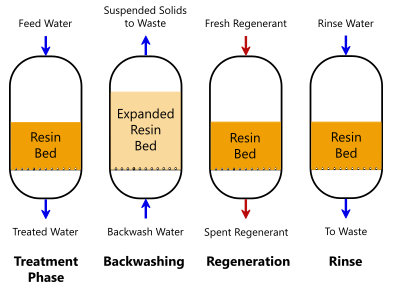PFAS Waste Management for Safer Disposal and Environmental Protection
PFAS Waste Management for Safer Disposal and Environmental Protection
Blog Article
Your Overview to PFAS Therapy Technologies and Advantages
The frequency of PFAS contamination in water sources demands an extensive understanding of readily available treatment technologies. Each technology not only targets details PFAS substances but likewise plays a crucial function in boosting overall water quality and protecting environmental integrity.
Comprehending PFAS Contamination
Comprehending PFAS contamination is important for addressing its pervasive impact on ecological and human wellness (m270 pfas treatment). Per- and polyfluoroalkyl compounds (PFAS) are a group of synthetic chemicals commonly used in different industrial and customer products as a result of their water- and grease-resistant buildings. Generally located in firefighting foams, non-stick cooking equipment, and water-repellent textiles, PFAS have actually gotten in the atmosphere with manufacturing processes, wastewater discharges, and seeping from garbage dumps
Once launched, these compounds continue in the atmosphere, resulting in extensive contamination of soil and water sources. Their unique chemical structure, identified by strong carbon-fluorine bonds, provides them immune to deterioration, resulting in a sensation referred to as "forever chemicals." As a result, PFAS can collect in the body and the food web, potentially causing adverse health and wellness effects, consisting of immune system disturbance, developmental concerns, and a raised risk of specific cancers cells.
Governing agencies and health companies are progressively acknowledging the importance of PFAS contamination, triggering efforts to monitor, assess, and reduce its results. Comprehending the pathways of PFAS contamination is vital for notifying public policy and creating effective methods to protect both ecological and human health.
Introduction of Treatment Technologies
Different treatment modern technologies have been created to address the difficulties posed by PFAS contamination in water and dirt. These technologies can be broadly identified right into numerous categories, each with its one-of-a-kind systems and efficiency in eliminating PFAS substances.
One popular strategy is ion exchange, which makes use of material products to capture and remove PFAS from infected water. One more modern technology, progressed oxidation processes (AOPs), utilizes solid oxidants and ultraviolet light to damage down PFAS right into much less unsafe substances.

Triggered Carbon Filtration
Turned on carbon purification is an extensively utilized approach for the removal of PFAS from infected water, understood for its capability to adsorb a broad array of natural substances. This technology uses turned on carbon, a very permeable material with an extensive surface location, which helps with the binding of PFAS molecules through physical adsorption. The efficiency of activated carbon in getting rid of PFAS is affected by a number of elements, consisting of the type of carbon utilized, the call time, and the focus of PFAS in the water.
Among the advantages of turned on carbon purification is its flexibility; it can be implemented in various configurations, such as granular triggered carbon (GAC) systems or powdered activated carbon (SPECIAL-INTEREST GROUP) systems. GAC systems are commonly used in larger-scale applications, find out while PAC can be utilized in smaller sized or short-lived setups. Additionally, the modern technology is relatively simple to run and preserve, making Related Site it available for lots of water treatment centers.

Ion Exchange Systems
Ion exchange systems represent an additional reliable technique for the elimination of PFAS from infected water, complementing methods like triggered carbon filtering. These systems operate on the principle of exchanging ions in the water with ions hung on a resin material. Ion exchange resins can be specifically developed to target the negatively charged PFAS compounds, properly catching them and permitting cleaner water to travel through.
Among the key advantages of ion exchange systems is their ability to get rid of a large range of PFAS, including both long-chain and short-chain variations. This adaptability makes them appropriate for various applications, varying from municipal water treatment to industrial processes. Furthermore, ion exchange systems can often achieve reduced discovery restrictions for PFAS contrasted to some other therapy techniques, hence enhancing water top quality.
However, it is important to keep an eye on and take care of the regrowth of ion exchange media, as the efficiency can decrease in time because of saturation. Appropriate maintenance and replacement of the resin are essential for sustaining the system's performance. On the whole, ion exchange systems give a trustworthy and efficient option for PFAS elimination, adding considerably to risk-free alcohol consumption water requirements and ecological protection.
Advanced Oxidation Processes
Advanced Oxidation Processes (AOPs) use effective oxidants to efficiently deteriorate PFAS compounds in contaminated water. These innovative therapy approaches generate extremely reactive species, such as hydroxyl radicals, that can break down complex PFAS molecules right into less hazardous byproducts. m270 pfas treatment. AOPs typically utilize mixes of ultraviolet (UV) light, ozone, hydrogen peroxide, or Fenton's reagent, enhancing the oxidation potential and improving deterioration performance
The primary advantage of AOPs exists in their ability to target a broad series of PFAS substances, including both long-chain and short-chain variations. This versatility is crucial, as PFAS contamination typically involves mixes of different substances with varying chemical frameworks. AOPs can try this be incorporated right into existing water treatment systems, making them a sensible solution for lots of towns and sectors.
Nonetheless, the execution of AOPs can be resource-intensive, requiring cautious consideration of functional prices and energy intake. Additionally, while AOPs work in breaking down PFAS, they may not completely remove all byproducts, demanding additional therapy steps - m270 pfas treatment. Generally, AOPs represent a promising opportunity for attending to PFAS contamination, adding to cleaner water sources and boosted public health and wellness security

Conclusion
By choosing the suitable modern technology, neighborhoods can boost water high quality, shield public health and wellness, and mitigate the ecological dangers linked with PFAS exposure. Proceeded research and execution of these techniques are essential for efficient administration of PFAS contamination in affected areas.
Report this page